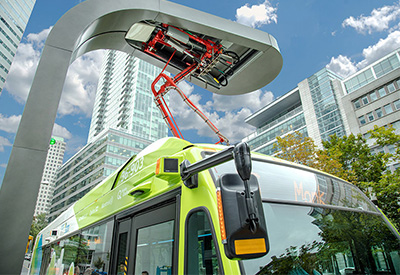Federal Government Investing in Electrified Transit Systems Across Canada

March 24, 2021
The federal government has announced $2.75 billion in funding over five years, starting in 2021, to enhance public transit systems and switch them to cleaner electrical power, including supporting the purchase of zero-emission public transit and school buses. This funding is part of an eight year, $14.9 billion public transit investment recently outlined by Prime Minister Justin Trudeau, and will also support municipalities, transit authorities and school boards with transition planning, increase ambition on the electrification of transit systems, and deliver on the government’s commitment to help purchase 5,000 zero-emission buses over the next five years.
This investment will create more well paying jobs in Canada’s robust and growing electric vehicle manufacturing sector. Nova Bus in Saint-Eustache, Lion Electrique in Saint-Jérôme, GreenPower in Vancouver and New Flyer in Winnipeg are great examples of innovative companies that have been delivering zero-emission transit solutions.
Infrastructure Canada will ensure coordination between this investment and the Canada Infrastructure Bank commitment to invest $1.5 billion in zero-emission buses and associated infrastructure as part of its three year Growth Plan.
To date, Infrastructure Canada’s funding programs have already supported the purchase of over 300 new zero-emission buses, and we expect this trend to accelerate. Today’s announcement is another step forward for smart public transit funding that delivers triple bottom line results: jobs and economic growth, a cleaner environment, and more inclusive communities. Canada has global leaders in clean technology and supply chains, and public transit investments will help promote confidence in a scalable and stable domestic market.
















